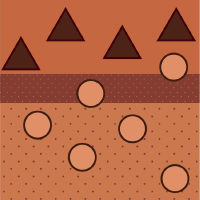Topic Menu
► Topic MenuTopic Editors



Membrane Separation Technology Research
Topic Information
Dear Colleagues,
Membrane processes are separation processes, where the transported components can be separated employing a semipermeable polymeric or inorganic membrane with a particular structure. Membrane processes can generally occur without introducing additional chemicals to the feed stream and thus separate products according to their size, charges, and Gibbs hydration energy. Therefore, the membrane process, which is a type of rate-based separation using pressure (ΔP), electric (ΔE), and stream concentration (ΔC) as driving factors, has been widely utilized in the sectors of saltwater desalination, green chemical engineering, and wastewater treatment. This Special Issue aims to cover the latest achievements in innovative membrane materials and membrane processes. Original research and review papers with emphasis on, but not limited to, the following topics are welcome:
1. Membrane processes for desalination, classification, and purification;
2. Fabrication of new membrane materials;
3. Membrane processes integration, optimization, and intensification;
4. Membrane simulation and process modeling.
Dr. Chenxiao Jiang
Dr. Zhe Yang
Dr. Ying Mei
Topic Editors
Keywords
- membrane
- separation
- desalination
- water treatment
- gas separation
- green production
- flow battery
- membrane reactor
- membrane fabrication
- process intensification
Participating Journals
| Journal Name | Impact Factor | CiteScore | Launched Year | First Decision (median) | APC | |
|---|---|---|---|---|---|---|

Energies
|
3.2 | 5.5 | 2008 | 16.1 Days | CHF 2600 | Submit |

International Journal of Molecular Sciences
|
5.6 | 7.8 | 2000 | 16.3 Days | CHF 2900 | Submit |

Membranes
|
4.2 | 4.4 | 2011 | 13.6 Days | CHF 2700 | Submit |

Separations
|
2.6 | 2.5 | 2014 | 13.6 Days | CHF 2600 | Submit |

Water
|
3.4 | 5.5 | 2009 | 16.5 Days | CHF 2600 | Submit |

MDPI Topics is cooperating with Preprints.org and has built a direct connection between MDPI journals and Preprints.org. Authors are encouraged to enjoy the benefits by posting a preprint at Preprints.org prior to publication:
- Immediately share your ideas ahead of publication and establish your research priority;
- Protect your idea from being stolen with this time-stamped preprint article;
- Enhance the exposure and impact of your research;
- Receive feedback from your peers in advance;
- Have it indexed in Web of Science (Preprint Citation Index), Google Scholar, Crossref, SHARE, PrePubMed, Scilit and Europe PMC.

